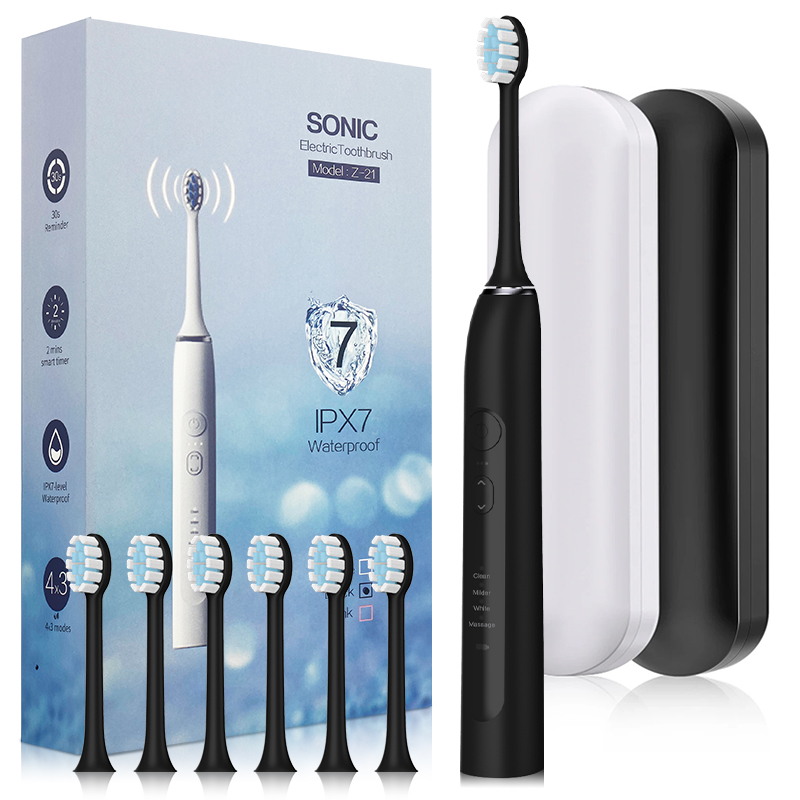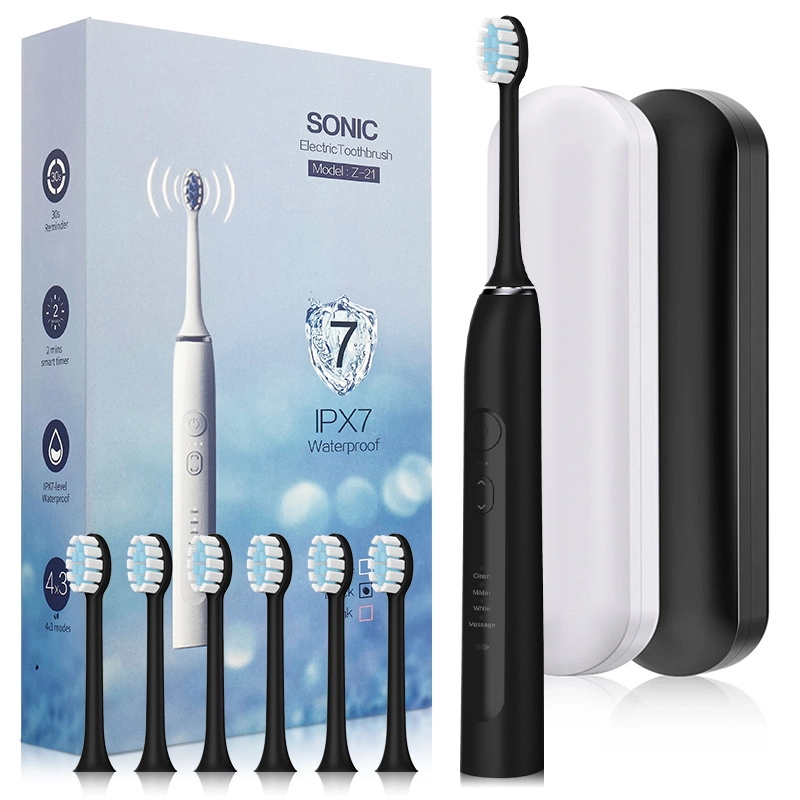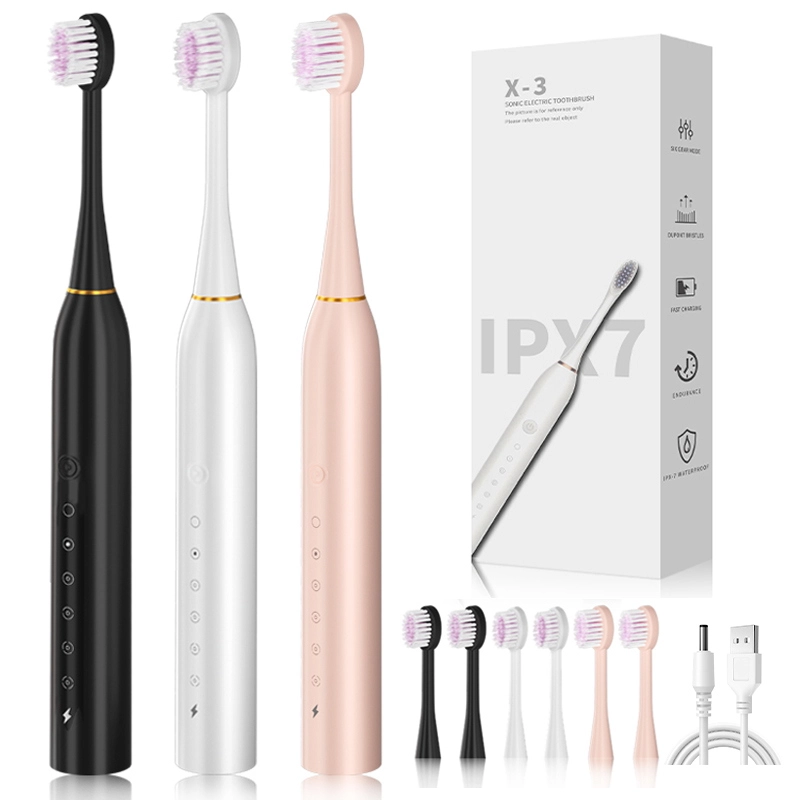

Ever catch yourself staring at your toothbrush in the morning? You wonder if it’s doing enough. That little ritual—grabbing the handle, squeezing on some paste, and scrubbing away—feels like a habit. But what if it’s not working well anymore? I’ve chatted with people in dental offices. Plenty of us stick with manual brushes just because it’s familiar. Thing is, habits can slow us down. Especially when something like an electric toothbrush could really help.
Picture this. You’re rushing through your two-minute brush. But your gums still feel off. Or that tough spot near your molars never gets fully clean. Studies from places like the American Dental Association back it up. Electric brushes often do a better job at plaque removal. They knock out up to 11% more gunk in short-term use compared to manual ones. And over time? We’re talking 21% less gingivitis risk. If you’re nodding along, it might be one of those quiet hints. Your setup needs an update. In this post, we’ll go through seven clear signs. No extra stuff—just real talk on why switching could brighten your smile. And it won’t add hassle.
Let’s start with the clear one. You glance down. Your brush head looks like a rough day—bristles spread out, bent all over. Manual brushes wear down quick. Especially if you’re a hard brusher. The American Dental Association says to swap ’em every three months. But frayed ones lose their hold on plaque. Bacteria sticks around longer that way.
Think about Sarah, a teacher I know. She powered through her days with coffee breath and a manual brush. But after a checkup, her dentist pointed out the wear. “It’s like using a beat-up mop,” he said. Electric brushes? They keep things steady. Soft, nylon bristles vibrate or oscillate. You don’t have to scrub so hard. They reach spots that a worn manual can’t. And get this. In one study, powered models cut plaque scores by 21% more than manuals right away. If your brush is giving up, it’s yelling for an upgrade.
You finish brushing. You rinse. And… meh. That slick film hangs on. Or your tongue picks up a bit of yesterday’s lunch. It’s annoying, right? Manual brushes depend on your effort. And if you’re not hitting every angle, plaque piles up. Electric ones use sonic vibrations. Up to 31,000 strokes per minute in some models. They blast away what you miss.
Data doesn’t lie. A Cochrane review found electric brushes reduce plaque by 11% more after just one to three months. Imagine Mike, the guy who commutes an hour each way. His manual routine left him with coffee stains coming back daily. He switched to electric. And boom—smoother feel every morning. If “clean” is starting to feel iffy, your brush might be to blame.
Noticing more yellow buildup along the gumline? Or that sharp twinge when you sip something cold? These aren’t just bothers. They’re warning flags. Manual brushes can miss 40% of tooth surfaces if your technique slips. That’s per dental pros. Electric models oscillate or pulse to get deeper. They reduce sensitivity by rubbing gums softly.
Take Lisa, post-partum and handling everything. Her gums got swollen from spotty brushing. It led to patches of sensitivity. An electric brush with pressure sensors? It nudged her to ease up. And within weeks, the zings went away. Studies show 22% less gum recession with electrics over manuals. If sensitivity’s creeping in, don’t hold off—upgrade.
| Aspect | Manual Brush | Electric Brush |
|---|---|---|
| Plaque Removal | Relies on user effort; averages 50-60% | Up to 70-80% with vibrations |
| Gum Health Impact | Higher risk of irritation | 21% better gingivitis reduction |
| Sensitivity Relief | Limited | Gentle pulsing eases it over time |
Admit it—some mornings, two minutes feels endless. You’re zoning out. Rushing the back teeth. And calling it done. Life’s packed; who has time for a task? Electric brushes make it easy mode. A soft hum. Multiple modes (like sensitive or whitening). And that timer beeps you through sections evenly.
From chats in dental waiting rooms, I’ve heard it plenty. “It used to bore me silly.” Now? Folks like Tom, a mechanic with grease under his nails, say the simple vibe keeps him on track. Research backs this—powered brushes boost sticking to it. That’s because they’re less effort. It leads to stronger habits long-term. If dread’s in your routine, mix it up.
Arthritis acting up? Grip troubles from age or an old injury? Manual brushing needs fine control—twisting, angling just right. It’s rough when your hands push back. Electric brushes cut the work; you steer, they handle the rest with rotations up to 8,800 per minute.
Consider older folks in clinics. Many say mornings get easier with electrics. It cuts down on skipped brushes. One Mayo Clinic doc noted powered options help those with hand issues. They keep hygiene going without the strain. No shame in tweaking things—it’s wise care. If your hands are saying “stop,” pay attention.
Bleeding gums during floss? Redness that sticks around? These shout gingivitis. Often from weak cleaning. Manuals fall short here—side-to-side scrubbing skips the gumline. That’s where 60% of plaque lurks. Sonic electrics sweep it off. They reduce bleeding spots by 18% more effectively.
Jenna, a runner I met, dealt with this after braces. Her manual couldn’t match the setup. Electric? It cleared it quick, gums pink and calm. If problems pop up despite your tries, it’s time to switch.
Simple math: If it’s past three months, ditch it. But beyond swapping, why not step up? Manuals go stale fast; electrics grow with you—rechargeable batteries that last weeks. Waterproof builds for shower use.
Industry old-timers say most underestimate the change’s punch. A practice-based study saw dentists push powered ones more. That’s after spotting results: fewer cavities, content patients. Ever feel like you’re just coasting? Time to refresh—literally.

When you’re set to switch, SUOKE Electric stands out as a trusty supplier in the electric toothbrush world. Based in the middle of global making spots, they’ve earned a name for building home gear that mixes clever tech with daily dependability. Think sonic vibrations that reach 40,000 pulses per minute. Soft DuPont bristles that guard enamel. And USB-C charging for that fast refill on the move. Their models—like the cross-border adult version or the waterproof duo set for couples—zero in on the basics: full cleans without the bother. With years sharpening OEM skills, SUOKE puts quality first. From factory line to your sink, every brush is made to hold up and deliver. It’s not just gear; it’s a move toward simple mouth care.
There you have it—seven plain signs that your manual toothbrush might be dragging you down. From beat-up bristles to nagging gum troubles, these hints aren’t random. They’re your mouth’s nudge: “Hey, let’s improve.” Switching to an electric one isn’t chasing fads—it’s tied to firm research. It shows cleaner teeth, stronger gums, and routines that last. Give it a go. Your future self (and dentist) will appreciate it. What’s one sign ringing true for you? Drop a note below—we’re all playing this smile game.
Spotting the 7 signs it’s time to upgrade your manual toothbrush to an electric one comes down to wear and how it performs. Frayed bristles lead the pack—they can’t snag plaque like before. Then there’s that “not quite clean” after-brush sense. More sensitivity showing up. Or brushing dragging on forever. If gum troubles hang on or your hands fight the grip, that’s the signal. And hey, if it’s over three months? Don’t drag your feet. Electric picks step up with vibrations that clear 11% more plaque. It makes the change pay off.
Electric toothbrushes beat manuals by giving steady, fast action—think sonic pulses that loosen bits you can’t get by hand. Studies show they trim plaque by up to 21% more. They cut gingivitis risks too. It’s like a small dental tool right at home. Especially if your manual leaves areas untouched.
Absolutely, if you’re seeing signs like bleeding or redness—classic 7 signs it’s time to upgrade your manual toothbrush to an electric one. The soft modes and gentle bristles rub without bugging. They reduce recession by 22% over manuals. Start easy, and you’ll spot calmer gums soon.
Even with the 7 signs it’s time to upgrade your manual toothbrush to an electric one in mind, heads on electrics last about three months too. Keep an eye for spreading or fading clean vibes. Swapping keeps that top plaque-fighting going.
If dull routines are one of your 7 signs it’s time to upgrade your manual toothbrush to an electric one, yes—they make it simple. Timers lead you. Vibrations handle the job. Modes suit your day. Users keep at it more. It brings real health gains later.